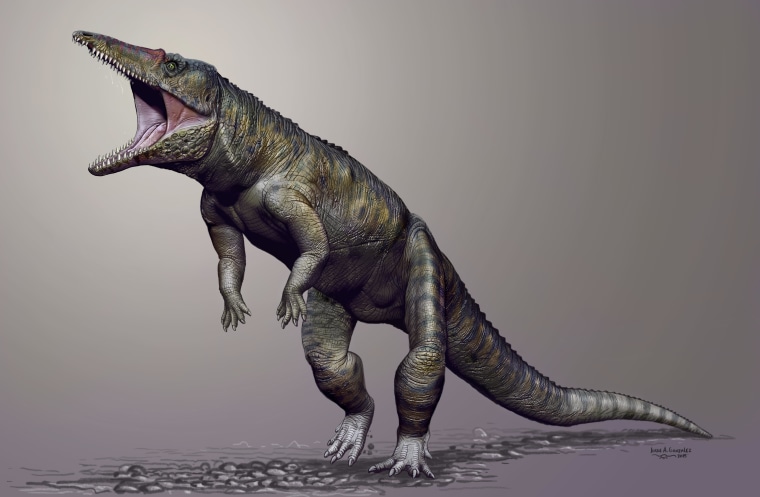A 9-foot-tall beast with bladelike teeth stalked the warm and wet environs of what is now North Carolina 230 million years ago, before dinosaurs came onto the scene there.
Now called Carnufex carolinensis, the crocodile ancestor probably walked on its hind legs, preying on armored reptiles and early mammal relatives in its ecosystem, researchers say.
They named it Carnufex, meaning "butcher" in Latin, because of its long skull, which resembles a knife, and its bladelike teeth, which it probably used to slice the flesh off the bones of prey, said lead study author Lindsay Zanno.
"'Butcher' seemed a very appropriate way to get that into the minds of people," Zanno, a paleontologist at North Carolina State University and the North Carolina Museum of Natural Sciences, told Live Science.

The large creature was one of the earliest crocodylomorphs, a group that includes today's crocodiles and their close relatives. "People don't think about how many different predators were around in the Triassic, and that crocs really ruled before dinosaurs," Zanno said. [Photos: Ancient Crocodile Relatives Roamed the Amazon]
Zanno and her colleagues discovered parts of the creature's skull, spine and arm bone while digging in the Pekin Formation in Chatham County, North Carolina. Sediments there were deposited 231 million years ago during what is called the late Triassic Period, when the area was still a part of the supercontinent Pangaea and was located near Earth's equator.
"Around the equator at that time, we don't yet have dinosaurs showing up in this ecosystem," Zanno said. That could be a sampling artifact or because scientists just haven't found those dinosaur bones, "but as far as we know they weren't there," she added. The absence of predatory dinosaurs may have allowed meat eaters like Carnufex to balloon to its giant size.
Its reign as top croc didn't last. The extinction at the end of the Triassic killed off a slew of Earth's predators, including the large crocodylomorphs. Small crocodylomorphs and theropod dinosaurs were left unscathed.
"Theropods were ready understudies for vacant top predator niches when large-bodied crocs and their relatives bowed out," Zanno said. "Predatory dinosaurs went on to fill these roles exclusively for the next 135 million years."
The researchers detailed the discovery on Thursday in the journal Scientific Reports.
— Jeanna Bryner, LiveScience
This is a condensed version of a report from LiveScience. Read the full report. Follow Jeanna Bryner on Twitter and Google+. Follow LiveScience on Twitter, Facebook and Google+.